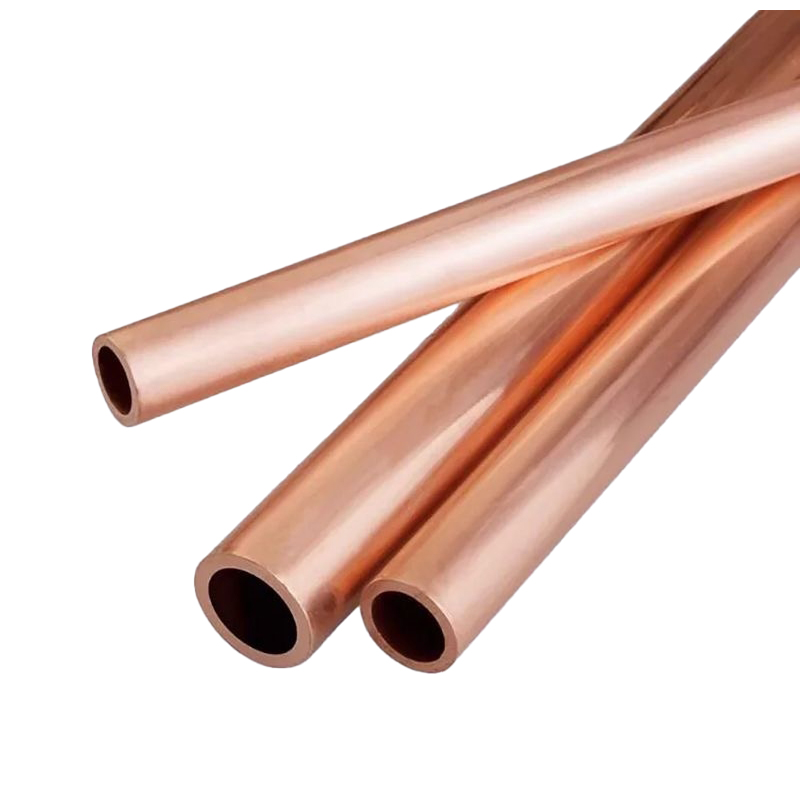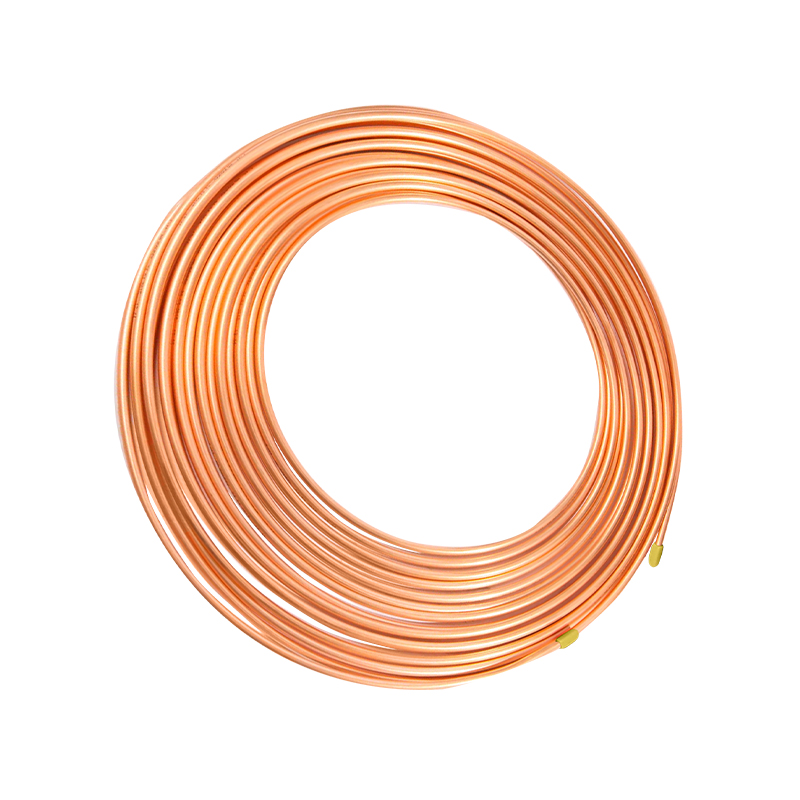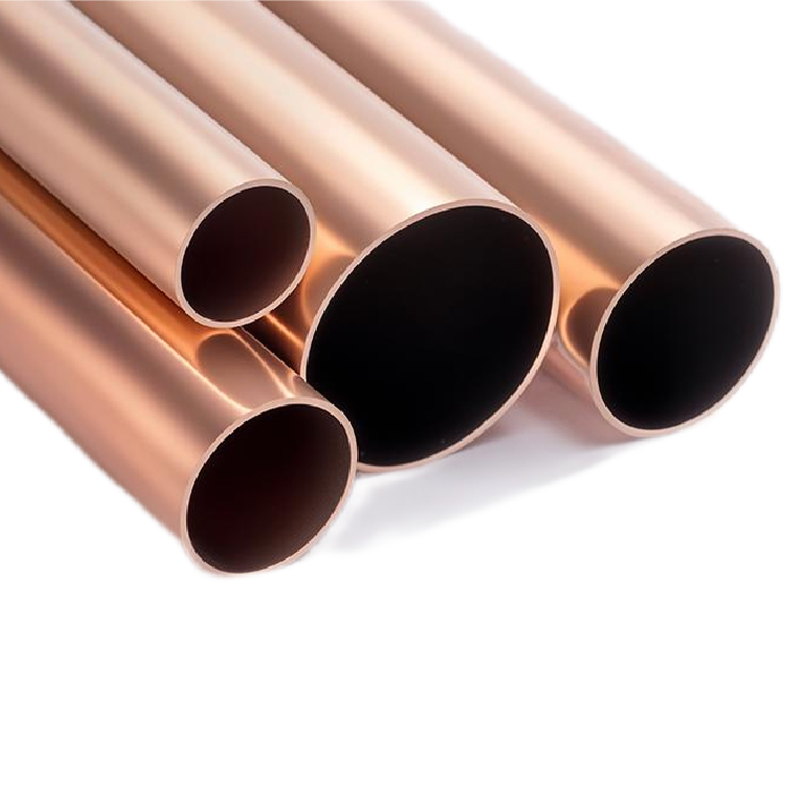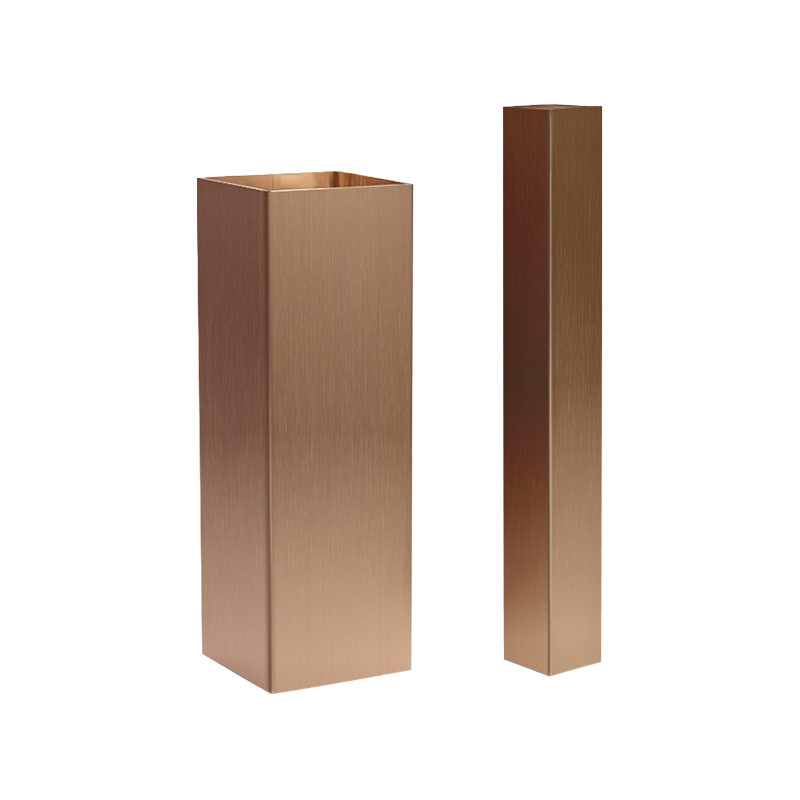
Heat exchange copper tube: A new solution to improve thermal efficiency
In modern industrial and household equipment, heat exchange technology plays a vital role, especially in improving energy efficiency, optimizing the working environment and enhancing system performance. Whether in air conditioning, refrigeration equipment, or various industrial cooling systems, heat exchangers are key components. With the continuous improvement of global energy efficiency requirements, the selection of heat exchange materials has become one of the core factors that determine system performance. Among many heat exchange materials, heat exchange copper tube has become one of the most ideal materials in heat exchange systems due to its excellent performance and reliability.
Advantages of heat exchange copper tube
1. Extremely high thermal conductivity: Copper has very high thermal conductivity and can quickly transfer heat from the heat source to the cold source. This enables copper tubes to work efficiently during the heat exchange process, reduce energy loss, and improve the overall thermal efficiency of the system.
2. Strong corrosion resistance: A protective film will form on the surface of the copper tube, which has good corrosion resistance. Even in an environment with heavy humidity or more chemical media, it can still maintain long-term stable use.
3. Excellent processability: Copper tubes have good weldability, bendability and cutability, and can be flexibly customized according to design requirements to ensure that the heat exchange system can adapt to complex working environments.
4. Environmental protection: Copper is a recyclable material, and the use of copper tubes will not pollute the environment, which meets the global requirements for environmental protection and sustainable development.
Application fields of heat exchange copper tube
Air conditioning and refrigeration industry
Heat exchange copper tubes are widely used in air conditioning and refrigeration industry. Air conditioning, refrigeration equipment and commercial refrigeration systems all rely on copper tubes to achieve efficient heat exchange. In these devices, copper tubes conduct refrigerants through pipes and quickly transfer indoor heat to the outside, thereby achieving cooling. The high thermal conductivity of copper enables the refrigeration system to quickly absorb and release heat, which is essential to ensure the efficient operation of the equipment.
In household central air conditioners, car air conditioners and large commercial refrigeration systems, the application of copper tubes effectively reduces energy loss, improves refrigeration effects, and extends the service life of equipment. Especially today when the use of environmentally friendly refrigerants has gradually become an industry trend, the heat exchange performance of copper tubes has played a positive role in promoting energy conservation and environmental protection.
Automobile cooling system
The application of copper tubes in the automobile industry is particularly prominent, especially in the engine cooling system. The engine generates a lot of heat during operation. If the heat cannot be dissipated in time, it will cause the engine to overheat or even damage. The copper tube ensures the operating temperature of the engine by taking away the heat efficiently. Copper tubes are not only used for engine cooling, but also widely used in battery cooling systems, especially in the field of new energy vehicles.
With the development of electric vehicle technology, battery cooling has become one of the key areas. Copper tubes can effectively absorb and release heat during battery charging and discharging, ensuring that the battery will not affect performance and life due to overheating during operation. The application of copper tubes helps new energy vehicles achieve a better balance in thermal management and improves the safety and endurance of the vehicle.
Industrial cooling and heat recovery system
In various industrial fields, especially metal processing, petrochemical, power generation and other high-energy-consuming industries, heat exchange copper tubes have become an important component. The equipment in these industries usually requires a lot of heat exchange processes, and the high thermal conductivity of copper tubes can greatly improve the cooling efficiency. For example, in power plants, copper tubes are widely used in cooling systems to ensure efficient heat exchange and optimal use of energy.
The role of copper tubes in **heat recovery systems** cannot be ignored. With the increase in global energy conservation and emission reduction requirements, heat recovery has become an important means for many industrial equipment to optimize energy efficiency. Through copper tubes, industrial equipment can recover and reuse waste heat, thereby achieving energy conservation goals and reducing production costs.
Green Buildings and Heating, Ventilation and Air Conditioning Systems (HVAC)
In green buildings and modern heating, ventilation and air conditioning (HVAC) systems, heat exchange copper tubes are widely used in ground source heat pumps, solar water heating systems and other facilities. Copper tubes can not only effectively transfer heat, but also ensure long-term stable operation of the system, playing an important role in geothermal, heating and cooling systems.
Especially in new green buildings and LEED certified buildings, copper tubes, as key materials for efficient energy-saving systems, can significantly improve the energy efficiency of buildings. Due to the recyclability and durability of copper tubes, it has become one of the first choices for environmentally friendly building materials, which meets the needs of today's construction industry for sustainable development.
Pharmaceutical and food processing industry
Heat exchange copper tubes also have important applications in the pharmaceutical industry and food processing industry. In the pharmaceutical production process, cooling and heating systems are often used to control temperature to ensure temperature stability and process requirements in the production process. Copper tubes can effectively transfer heat in these systems to ensure the efficiency and safety of the pharmaceutical process.
In the food processing process, copper tubes are widely used in refrigeration equipment, liquid circulation cooling systems, etc. It can improve the energy efficiency of equipment, extend the service life of the system, and reduce unnecessary maintenance costs while ensuring the cooling effect in the food processing process.
Aerospace and high-end equipment
In the aerospace field, copper tubes are widely used in satellites, rocket engine cooling systems and other key equipment due to their extremely high thermal conductivity and stable physical properties. Aerospace equipment is usually in extreme environments, and the system must ensure high stability and reliability. The efficient heat exchange capacity of copper tubes just meets this demand.
In addition, copper tubes also play an important role in the thermal management of high-end equipment. Whether in the cooling system of high-performance computer equipment or in the thermal control system of laser equipment and ultra-high voltage equipment, the role of copper tubes cannot be ignored.
Product Category
Related news
-

What is a thick-walled copper tube? Thick-walled copper tube, also known as seamless thick-walled copper tube, is a high-performance metal tube made o...
See Details -

Overview and Importance of Copper Capillary Tube In modern industrial equipment and precision control systems, miniaturization and high precision have...
See Details -

What is a copper tube? Analysis of material composition and basic characteristics Definition of copper tube Copper tube is a tubular object made of co...
See Details -

Understanding Copper Square Tubes: Composition, Grades, and Typical Applications Copper square tubes are specialized extrusions that combine the super...
See Details

 English
English Español
Español